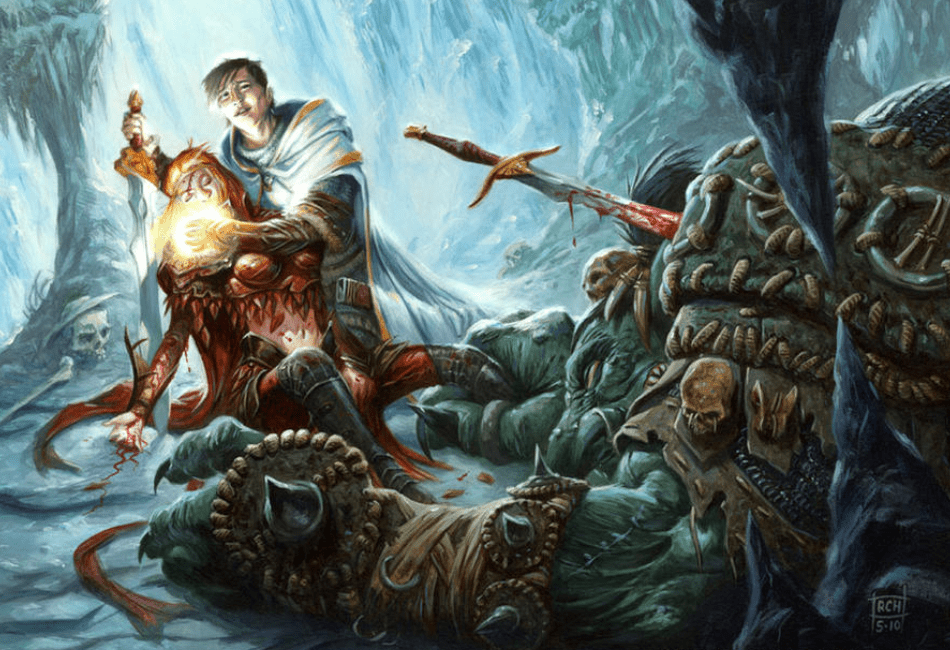Side-by-side the red dragon and Baggi the Half-Orc Barbarian lay dead. Peregrine the Half-Elf Paladin laid Baggi who had so valiantly born the brunt of the fighting, to rest before joining the Tiefling College of Lore bard to guard the door.
Hopefully Baggi the Half-Orc Barbarian will fully recover and stand by their side in time for their climactic battle…
With Vlaakith CLVII, Lich-Queen of the Githyanki city of Tu’narath on the Astral Plane.
Welcome to a True Resurrection 5e Guide.
Bottomline on True Resurrection
True Resurrection is a 9th-level necromancy D&D spell that allows you to bring a dead creature back to life without any penalties to you or the deceased. Basically, you and the deceased can return to combat at maximum strength that very day.
How Does True Resurrection Work?
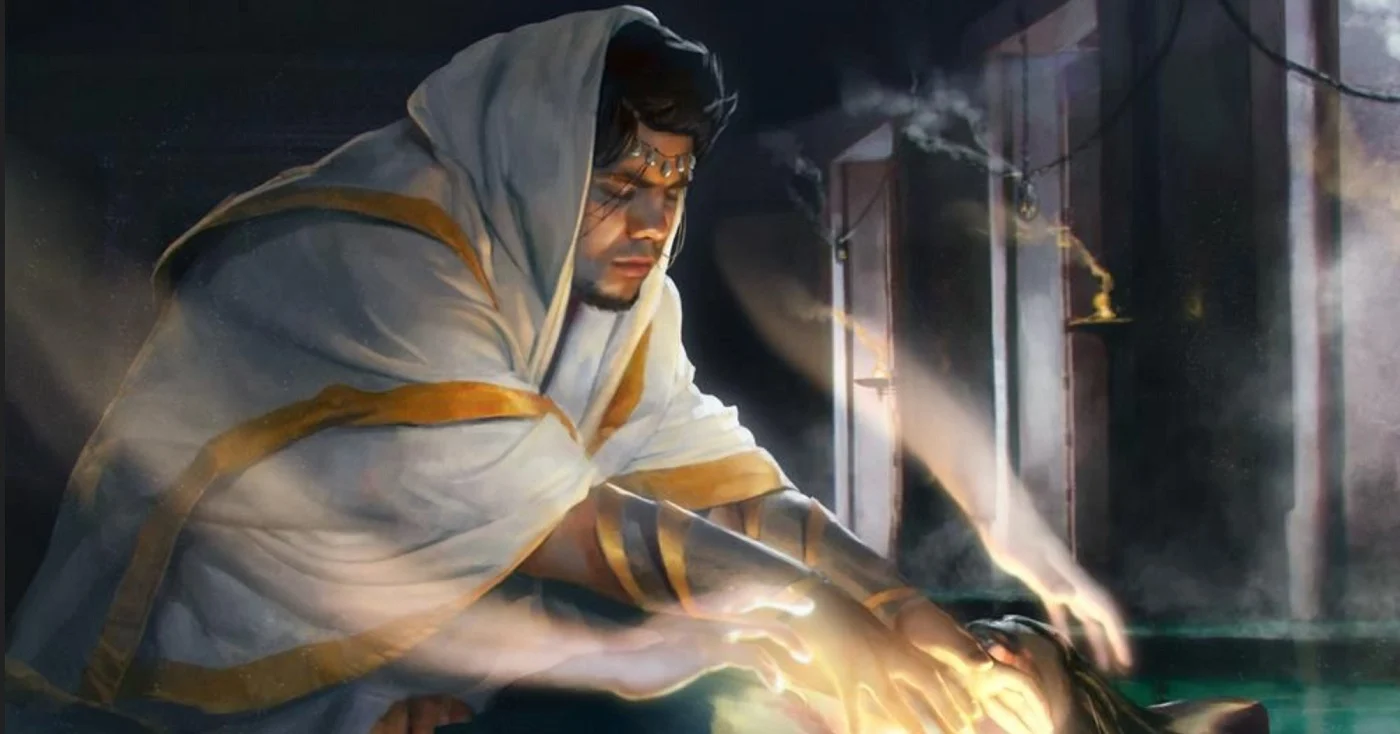
True Resurrection enables you to resurrect a creature within certain limitations:
- The subject can be dead no longer than 200 years
- The soul must be free and willing to return to the realm of the living
- The subject has not died of old age
The resurrected subject will be restored in every way, including:
- All lost hit points recovered
- All poison neutralized
- All diseases cured
- All curses lifted
- All missing and damaged limbs and organs replaced
- Undead are made normal and alive again
If the original body is available, you touch the body.
If the body is unavailable, you speak the creature’s name and the creature appears within 10 feet of you.
Here are the stats:
- True Resurrection
- 9th level necromancy
- Casting time: 1 hour
- Range: touch
- Components: V, S, M (a sprinkle of holy water and diamonds worth at least 25,000 gp, which the spell consumes)
- Duration: Instantaneous
Who Can Use True Resurrection?
Within Player’s Handbook (PHB) rules, this spell is only available to clerics and druids.
Is True Resurrection Good?

Any spell is a good spell to have on your list if it doesn’t cost you anything. For the limited number of spells you could prepare for the day, would you want to choose True Resurrection over other spells?
No.
It is unlikely that you would want to use up a preparation slot for True Resurrection on any adventuring day or even in anticipation of most climactic battles.
Why?
In most situations, lower-level spells, like Revivify (3rd level) and Resurrection (7th level), will solve the problem. Besides Tue Resurrection, other back-to-life spells include:
- Revivify
- Raise dead
- Resurrection
- Reincarnation
- Wish
What’s the difference between Resurrection (9th level) and True Resurrection?

| Resurrection | True Resurrection |
| Up to 100 years dead | Up to 200 years dead |
| Will not remove curses, magical diseases, etc. | Removes curses and cures ALL diseases |
| -4 penalty on attacks and saves until 4 long rests | No penalty |
| Penalties on caster if dead longer than 1 year | No penalty |
The first question to ask is when will a party member be dead for more than 100 years? Who even has a game that runs that long in “game time”?
So, that means that if you use this at all on someone who hasn’t been dead that long, it can wait a day or 2 and you don’t need to prepare the spell before your adventuring day.
All of the other problems, such as curses and penalties, can be solved with a combination of spells and time. The only time when True Resurrection would be the best choice is when you are expecting a climactic battle where various party members are expected to get killed, and you will need them to return to the fight that very same day.
Such battles are basically against godlings like Vecna and Tiamat and are only reserved for 20th-level play. If you want to find out more about 20th level play, I would highly recommend B. Dave Walters of DNDBeyond, who has made a niche out of 20th-level one-shots.
Repurposing Resurrection as True Resurrection

One of the reasons why I say True Resurrection isn’t all that good is that 9th-level spell slots are the most valuable spell slots in the game. Even when your cleric or druid reaches 20th level, you will only have 1 9th level spell slot, so you have to make it count.
There are so many other spells you might prefer to prepare, rather than True Resurrection:
- Astral Projection
- Gate
- Mass Heal
- Foresight
- Shapechange
- Storm of Vengeance
If you can repurpose Resurrection to do what True Resurrection does, you can use your 9th-level spell slot to choose from the spells above and others. An added benefit of repurposing Resurrection as a True Resurrection Spell is that bards can have access too. Example:

Baggi the Half-Orc Barbarian was roasted by a red dragon. The party needs her brought back to life and combat-ready because they have an upcoming battle with the Big Bad, Vlaakith CLVII, Lich-Queen of the githyanki city of Tu’narath on the Astral Plane.
Let’s say the party wants to save their cleric’s best spells for the upcoming battle. Instead of their cleric casting True Resurrection, they can have their bard cast Resurrection.
The problem is that Baggi is at a -4 penalty on all attack rolls and saving throws and will not be at full strength until 4 long rests. They need to fight the Lich-Queen in a couple of hours.
How do they take care of this penalty? Back in 1e rules, ability penalties could easily be solved with Strength Spell and other spells. 1e Strength Spell has been “nerfed” into 5e Bull’s Strength. Unlike Strength Spell, Bull’s Strength does not assist for your attack and damage rolls. It only assists for Strength checks. Since 5e spells have changed so much since 1e, it’s probably better to use magic items, Like Potion of Hill Giant Strength.
The idea is that if a 17th-level or higher party goes on a dangerous quest, like entering The Palace of Whispers to kill the Lich-Queen, they could purchase specific magic items in advance. Because 9th-level spell slots are so precious, sometimes it’s more cost-effective to purchase magic items instead.
Depending on your DM, Greater Restoration (5th level) could solve the penalties problem. Some DMs may require 3 castings: 1 for attack rolls penalties, 1 for saving throws, and 1 for ability checks.
True Resurrection vs Other Back-to-Life Spells
Within PHB rules, there are 7 back-to-life spells. Besides True Resurrection, the other back-to-life spells include:
- Revivify (3rd level)
- Raise dead (5th level)
- Reincarnation (5th level)
- Resurrection (7th level)
- Wish (9th level)
As you can see, the only other 9th-level back-to-life spell besides True Resurrection is Wish. If you think in terms of spell-slot economy, it’s usually better to solve the problem with a lower-level spell slot. Even if the lower-level spell has certain disadvantages, it can usually be used in conjunction with other spells to repurpose it as a True Resurrection spell.
True Resurrection vs Revivify
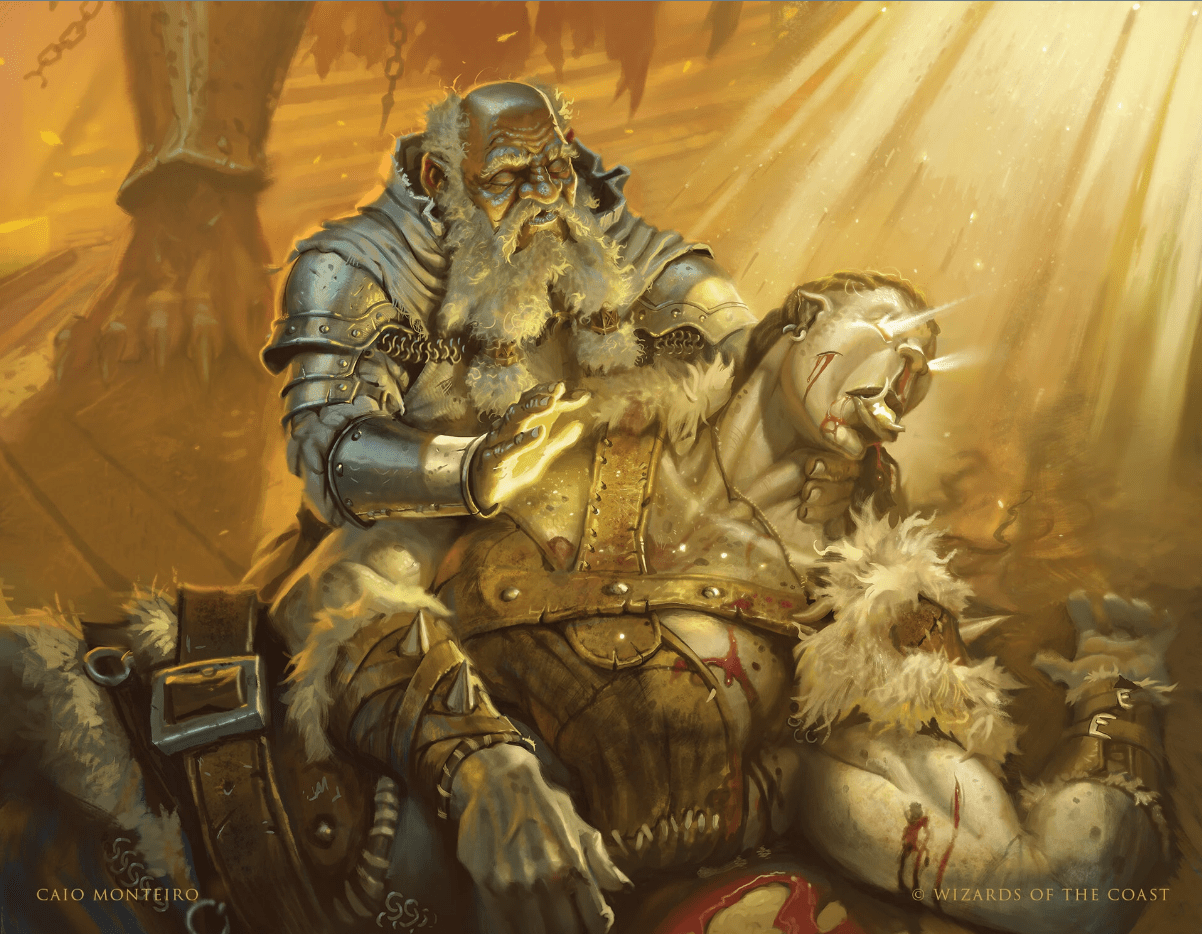
Provided that you can get to a deceased ally within 1 minute (10 rounds) of the time of death, Revivify is usually the best solution among the back-to-life spells.
| Revivify | True Resurrection |
| Up to 1 minute dead | Up to 200 years dead |
| Will not remove curses, magical diseases, etc. | Removes curses and cures ALL diseases |
| -4 penalty on attacks and saves until 4 long rests | No penalty |
| Penalties on caster if dead longer than 1 year | No penalty |
| Subject returns with 1 hit point | Subject returns with full hit points |
| Will not restore missing body parts | Restores all body parts |
Example: Baggi the Barbarian gets killed fighting the red dragon mentioned above, but the party’s cleric or druid gets to Baggi within 1 minute of the time of death. After the dragon is dead and the location is secured, they can worry about Baggi’s problems:
- 1 hit point
- -4 penalty on attacks and saves
Obviously, the easiest way to solve the problem would be to heal up Baggi’s hit points through various means and postpone important battles for 4 long rests. If that’s not possible, you can do the following:
- Apply magic to restore hit points: Cure Wounds, Song of Rest, Healing Word, etc.
- Apply Greater Restoration to eliminate penalties if the DM allows it
- Apply Regeneration if any body parts have been lost
All of the above are still more cost-effective than a 9th-level spell slot.
True Resurrection vs Raise Dead
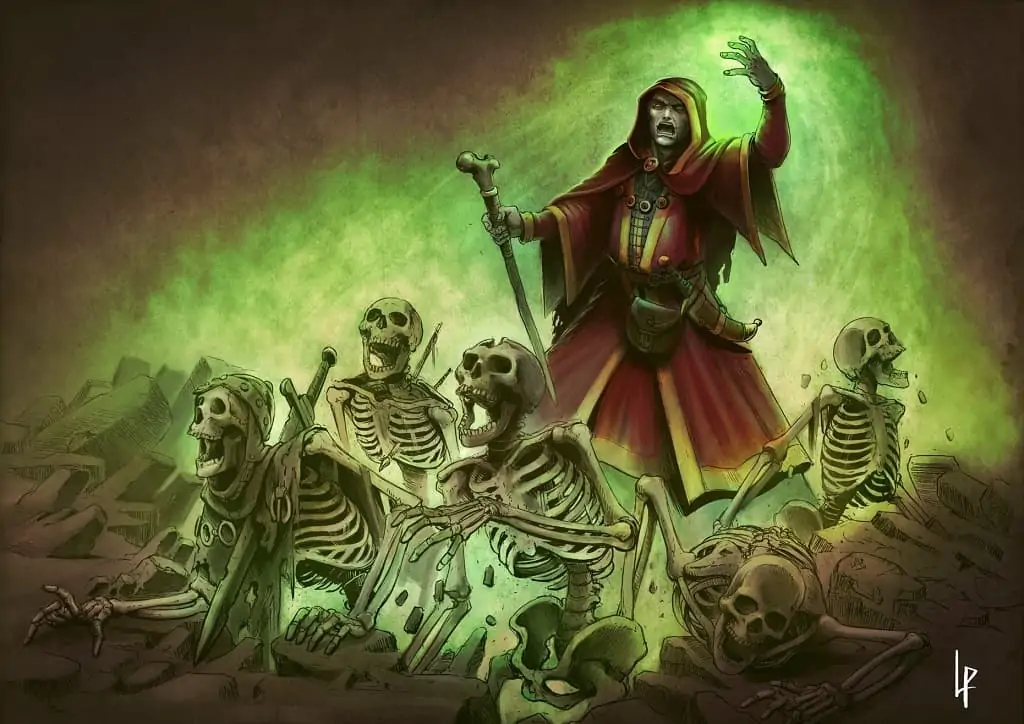
If you cannot aid a fallen comrade within 1 minute of death, Raise Dead is usually the best solution.
| Raise Dead | True Resurrection |
| Up to 10 days dead | Up to 200 years dead |
| Will not remove curses, magical diseases, etc. | Removes curses and cures ALL diseases |
| -4 penalty on attacks and saves until 4 long rests | No penalty |
| Will not return Undead to life | Will return Undead to life |
| Subject returns with 1 hit point | Subject returns with full hit points |
| Will not restore missing body parts | Restores all body parts |
In the example above, let’s say that the battle with the red dragon takes so long that Revivify is not an option for Baggi the Half-Orc Barbarian. Most battles don’t last 10 days, so Raise Dead probably is an option.
Baggi, after Raise Dead Spell, would have the same problems she did after Revivify Spell. The same solutions could be applicable.
Reincarnation vs Other Back-to-Life Spells
Reincarnation is definitely an out-of-the-box solution. For some players, it makes for great role-play. For others, it completely destroys their character’s identity which might not be a good thing considering how much time has been invested by that player in a high-tier character.
| Resurrection | Reincarnation |
| Up to 100 years dead | Up to 10 days dead |
| Will not remove curses, magical diseases, etc. | Provides new body |
| -4 penalty on attacks and saves until 4 long rests | No penalty |
| Resurrects old body | Body may be of a different race |
| Will not return Undead to life | Provides new body |
For purposes of winning an upcoming epic battle, Reincarnation (5th level) may be better than Resurrection (7th level) and less costly than True Resurrection (9th level). It really depends on what spells the characters had already prepared for that day of game time assuming that the epic battle with the Big Bad will occur that day.
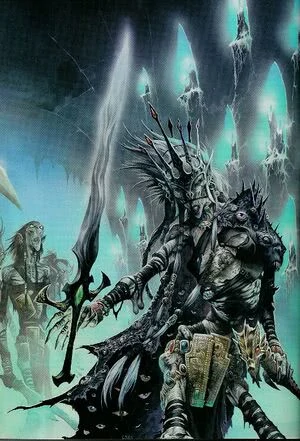
The obvious drawback is that the high-level character in question may come back as a different race. Rather, they will most likely come back as a different race.
In the example above, Baggi the Half-Orc Barbarian is only 4% likely to come back as a half-orc. How would this affect the party’s upcoming battle with the Lich-Queen?
Let’s compare within PHB rules. The stats that have been affected by the Reincarnation Spell are in boldface:
Half-Orc Barbarian 4%
| Race | Lvl | AC | HP | STR | DEX | CON | INT | WIS | CHA | #, Type | Att/Dam | Damage |
| Half-Orc | 17 | 16 | 207 | 20+5 | 12+1 | 20+5 | 10+0 | 13+1 | 8-1 | 2, +5 Greatsword | +16/+10 | Dam 1d12+10/x2 |
Racial ASIs +2 STR, +1 CON
Dragonborn Barbarian 4%
| Race | Lvl | AC | HP | STR | DEX | CON | INT | WIS | CHA | #, Type | Att/Dam | Damage |
| Dragonborn | 17 | 15 | 190 | 20+5 | 12+1 | 19+4 | 10+0 | 13+1 | 9-1 | 2, +5 Greatsword | +16/+10 | Dam 1d12+10/x2 |
Racial ASIs +2 STR, +1 CHA
Hill-Dwarf Barbarian 9%
| Race | Lvl | AC | HP | STR | DEX | CON | INT | WIS | CHA | #, Type | Att/Dam | Damage |
| Hill-Dwarf | 17 | 16 | 224 | 18+4 | 12+1 | 20+5 | 10+0 | 14+2 | 8-1 | 2, +5 Greatsword | +15/+9 | Dam 1d12+9/x2 |
Racial ASIs +1 HP/HD, +1 WIS
Mountain Dwarf Barbarian 8%
| Race | Lvl | AC | HP | STR | DEX | CON | INT | WIS | CHA | #, Type | Att/Dam | Damage |
| Mountain Dwarf | 17 | 16 | 207 | 20+5 | 12+1 | 20+5 | 10+0 | 13+1 | 8-1 | 2, +5 Greatsword | +16/+10 | Dam 1d12+9/x2 |
Racial ASIs +2 STR, +1 CON
Dark Elf Barbarian 4%
| Race | Lvl | AC | HP | STR | DEX | CON | INT | WIS | CHA | #, Type | Att/Dam | Damage |
| Dark Elf | 17 | 16 | 190 | 18+4 | 14+2 | 18+4 | 10+0 | 13+1 | 9-1 | 2, +5 Greatsword | +15/+9 | Dam 1d12+9/x2 |
Racial ASIs +2 DEX, +1 CHA
High Elf Barbarian 9%
| Race | Lvl | AC | HP | STR | DEX | CON | INT | WIS | CHA | #, Type | Att/Dam | Damage |
| High Elf | 17 | 16 | 190 | 18+4 | 14+2 | 18+4 | 11+1 | 13+1 | 8-1 | 2, +5 Greatsword | +15/+9 | Dam 1d12+9/x2 |
Racial ASIs +2 DEX, +1 INT
Wood Elf Barbarian 8%
| Race | Lvl | AC | HP | STR | DEX | CON | INT | WIS | CHA | #, Type | Att/Dam | Damage |
| Wood Elf | 17 | 16 | 190 | 18+4 | 14+2 | 18+4 | 10+1 | 14+2 | 8-1 | 2, +5 Greatsword | +15/+9 | Dam 1d12+9/x2 |
Racial ASIs +2 DEX, +1 WIS
Forest Gnome Barbarian 4%
| Race | Lvl | AC | HP | STR | DEX | CON | INT | WIS | CHA | #, Type | Att/Dam | Damage |
| Forest Gnome | 17 | 16 | 190 | 18+4 | 13+1 | 20+5 | 12+1 | 13+1 | 8-1 | 2, +5 Greatsword | +15/+9 | Dam 1d12+9/x2 |
Racial ASIs +2 INT, +1 DEX
Rock Gnome Barbarian 6%
| Race | Lvl | AC | HP | STR | DEX | CON | INT | WIS | CHA | #, Type | Att/Dam | Damage |
| Rock Gnome | 17 | 16 | 207 | 18+4 | 12+1 | 20+5 | 12+1 | 13+1 | 8-1 | 2, +5 Greatsword | +15/+9 | Dam 1d12+9/x2 |
Racial ASIs +2 INT, +1 CON
Half-Elf Barbarian 4%
| Race | Lvl | AC | HP | STR | DEX | CON | INT | WIS | CHA | #, Type | Att/Dam | Damage |
| Half-Elf | 17 | 15 | 190 | 19+4 | 12+1 | 19+4 | 10+1 | 13+1 | 10+0 | 2, +5 Greatsword | +15/+9 | Dam 1d12+9/x2 |
Racial ASIs +2 CHA, +1 STR, +1 CON
Lightfoot Halfling Barbarian 9%
| Race | Lvl | AC | HP | STR | DEX | CON | INT | WIS | CHA | #, Type | Att/Dam | Damage |
| Lightfoot Halfling | 17 | 16 | 190 | 18+4 | 14+1 | 19+4 | 10+1 | 13+1 | 9-1 | 2, +5 Greatsword | +15/+9 | Dam 1d12+9/x2 |
Racial ASIs +2 DEX, +1 CHA
Stout Halfling Barbarian 8%
| Race | Lvl | AC | HP | STR | DEX | CON | INT | WIS | CHA | #, Type | Att/Dam | Damage |
| Stout Halfling | 17 | 17 | 207 | 18+4 | 14+2 | 20+5 | 10+1 | 13+1 | 8-1 | 2, +5 Greatsword | +15/+9 | Dam 1d12+9/x2 |
Racial ASIs +2 DEX, +1 CON
Human Barbarian 10%
| Race | Lvl | AC | HP | STR | DEX | CON | INT | WIS | CHA | #, Type | Att/Dam | Damage |
| Human | 17 | 16 | 207 | 19+4 | 13+1 | 20+5 | 11+1 | 14+2 | 9-1 | 2, +5 Greatsword | +15/+9 | Dam 1d12+9/x2 |
Racial ASIs +2 STR, +1 CON
Tiefling (Asmodeus) Barbarian 4%
| Race | Lvl | AC | HP | STR | DEX | CON | INT | WIS | CHA | #, Type | Att/Dam | Damage |
| Hill-Dwarf | 17 | 16 | 207 | 18+4 | 12+1 | 20+5 | 11+0 | 13+1 | 10+0 | 2, +5 Greatsword | +15/+9 | Dam 1d12+9/x2 |
Racial ASIs +2 CHA, +1 INT
Obviously, if there’s no rush, it’s better to wait 1 day and cast True Resurrection. If you can’t wait, depending on how important this upcoming battle with the Big Bad is, Reincarnation could be a viable option because you won’t have to worry about penalties, hit point restoration, and lost limbs. Baggi could be combat-ready in little more than an hour.
The ASIs aren’t that big a deal because, as the tables above reveal, the modifiers are usually only affected for about 1 point of difference, possibly reducing the chances to hit by 5%. That’s still a lot better than a -4 penalty that would reduce the chances to hit by 20%.
A more difficult problem would be the new body’s size in relation to Baggi’s weapon, a +5 greatsword. Greatswords have the heavy weapon property. That means that no small or tiny characters can wield them without a disadvantage on attack rolls. Within PHB races, small creatures include halflings and gnomes.
Dwarves are considered medium and can therefore use heavy and long weapons as well as humans can. Within PHB rules, a reincarnated character has a 27% chance of coming back as a small-sized creature, halfling or gnome, and therefore being too small to wield a heavy weapon without a disadvantage.
Depending on how long the impending battle is going to be, this problem can be solved with an Enlarge/Reduce Spell (2nd level). It’s duration is only 1 minute and it is a concentration spell. Therefore, the caster would still be able to fight but wouldn’t be able to cast any other concentration spells while a small-sized Baggi is using her +5 Greatsword. Example:
Baggi the Half-Orc Barbarian is reincarnated as Baggi the Stout Halfing Barbarian. Her Strength modifier and Attack/Damage rolls are affected by 1 point, 5%. Her hit points and Constitution and hit points are unaffected and her Dexterity modifier and AC are actually improved by 1 point, 5%. She doesn’t have to worry about her armor being too big for her because she doesn’t wear armor. She does have a problem with her +5 greatsword because she is a small-sized creature.
The party’s wizard plan’s the following solution. Baggi will carry but not use her greatsword until the epic battle. Then, just as the epic boss fight is about to begin, the wizard will cast Enlarge on Baggi the Halfling Stout Barbarian. The wizard would then try to maintain a safe distance from the Lich-Queen and her minions while making ranged attacks but avoiding concentration spells in order to maintain the Enlarge Spell.
This Enlarge Spell would increase Baggi’s height 2x and her weight 8x, making her about 6 feet tall and 320 lbs. Enlarged Baggi would also have an advantage on all Strength checks and Strength saving throws. We know that such a character would have no problem handling a +5 greatsword but what about an enlarged +5 greatsword? Players should get the DM’s ruling on this before casting.
As a DM, I think a 320 lbs. character with 18 Strength and an advantage on Strength checks could wield a 12-foot long, 48 lbs. greatsword with no problem, but other DMs may disagree. (Even as a halfing, Baggi’s 18 Strength would make her physically as strong as a warhorse.)
- If the DM allows this, Baggi’s enlarged greatsword would do an additional 1d4 points of damage which compensate for the 1 point of Strength modifier reduction.
- If the DM doesn’t allow this, Baggi could simply drop the greatsword before the Enlarge Spell is cast and pick up the normal-sized greatsword in her enlarged state.
If Baggi were not an unarmored barbarian, but a paladin in full plate, the armor would be an even more difficult problem. Even if your character transitions from 1 medium-sized creature to another, a slight difference in height and weight could make the armor not fit. Let’s not even talk about tieflings and their tails!
The moral?
Don’t reincarnate your paladins!
Wish vs Other Back-to-Life Spells

The main difference between Wish and the other back-to-life spells, including True Resurrection, is that Wish is a wizard spell. Cleric spells bring the dead back to life by divine intervention. Wizard spells accomplish magic not by divine intervention but by manipulating The Weave, the very fabric of reality.
Wish spells really tamper with reality. Within certain contexts, that tampering is ok and those contexts are bullet-pointed on PHB p. 288-289. Going beyond that context, which they refer to as “the scope”, is in effect tampering with a Monkey’s Paw and may incur the wrath of the DM. PHB describes this DM wrath as having the Wish fulfilled in terms that are quite literal but are as far away from the spirit of the wish as possible.
Wishing a dead character back to life is not covered in “the scope” mentioned in PHB. An exception established by Vox Machina of Critical Role would be using a Wish spell to make arrangements with the god that controls the realm of the departed soul in question. I’ll discuss this more in the Souls Must Go Somewhere section.
Diamonds and Gold and True Resurrection
Power within the game has to be balanced by the DM in a way that does not rob the players of their free agency. Even at 20th level, the players should have some respect for the power of death.
If the DM says,
“I don’t want your spells to work because your characters are getting overpowered,” the players are likely not to respond well.
In the real world, however, economies ebb and flow. Even though 20th-level characters have access to vast empires, having 25,000 gp worth of diamonds on hand for every character for every adventure is actually a logistical feat. A diamond shortage is quite possible.
Moreover, the populations ruled over by these high-level characters might object to a diamond tax imposed on them for the strict purpose of resurrecting dead player characters. Are the player characters going to spend 25,000 gp for every peasant and soldier that dies of causes other than natural? Why is a player character’s life worth more than that of a peasant or a soldier?
The players may be used to fighting against monsters, but how good are they at fighting against moral arguments? What would their gods have to say on the subject?
If the characters are evil, moral arguments might not work directly. Indirectly, however, this diamond tax could still be a cause for revolt.
Souls Must Go Somewhere
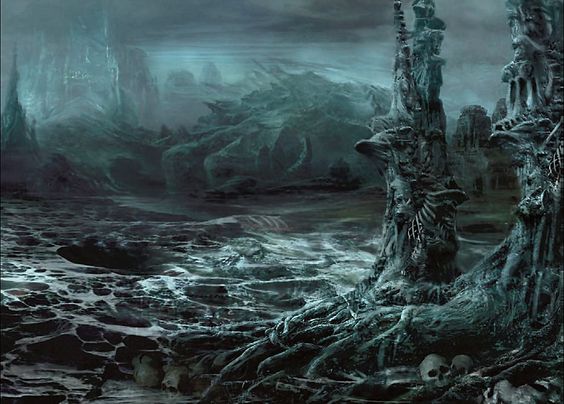
A final point is that the souls of the deceased have their own realms to go to, and they can only return to their resurrected bodies at the pleasure of the realms’ gatekeepers. The players might choose to take death lightly but the gods don’t!
If their afterlife turns into a revolving door for adventurers, it might have consequences for their own realms. That doesn’t mean that the gods won’t allow for True Resurrection and other back-to-life spells, but it does mean that the DM has an additional mechanism to keep these spells from being abused.
FAQs
Question: What happens if you cast True Resurrection on a lich?
ANSWER: You cannot use true resurrection to defeat a combative lich. The soul has to be willing to return to its pre-undead state. Liches like vecna and the lich-queen choose to be undead. Were you to cast on them, they would simply say, “thanks, but no thanks. Now die, mortal!”
If the soul is an unwilling undead, there is some debate over whether or not the undead form needs to be “killed” first.
QUESTION: CAN YOU BRING A GOD BACK TO LIFE WITH TRUE RESURRECTION?
ANSWER: The problem with dead gods is usually not finding a caster with sufficient back-to-life spells. The problem is that all souls go somewhere when they die. The souls of dead gods are usually imprisoned in some realm, often by the being who killed them in the first place. Until a soul is freed from its jailor, true resurrection doesn’t work because the soul cannot return to its corpse.
In some cases, the soul of the dead god is completely annihilated. In that case, true resurrection is also impossible because there is simply no soul to return to the corpse in question.
QUESTION: HOW CAN A WIZARD CAST TRUE RESURRECTION?
ANSWER: While true resurrection is not on the wizard spell list, a wizard can cast true resurrection indirectly. If a wizard uses true polymorph to transform into a kirin, the wizard can cast true resurrection as a kirin.
QUESTION: IS THERE A WAY TO USE TRUE RESURRECTION TO BRING A SUBJECT BACK TO LIFE THAT HAS BEEN DEAD LONGER THAN 200 YEARS?
ANSWER: Yes. You can travel back in time through a portal, wish spell, or some spell not covered in phb. If you go back to a point within 200 years of the subject’s passing, you can cast true resurrection normally.
Of course, you then have to find a means to return to your own time if you want to re-enter your original campaign. There is also the problem of creating a paradox in the space-time continuum that would most likely result from resurrecting a powerful creature that had been dead so long, not to mention your own presence in the past.
True Resurrection 5e Guide: Final Thoughts
True Resurrection isn’t the only back-to-life spell out there, but next to Wish, it’s the most powerful. Even Wish, like the other back-to-life spells, reduces the caster’s abilities for at least 1 long rest. Of the back-to-life spells, only True Resurrection returns both the caster and the subject to full combat readiness within a relatively short period of time, 1 hour.
As characters level up, players have a deeper emotional investment in them. The DM should take care before killing off a character that his or her player has invested 2 years or more in. This is why True Resurrection and other back-to-life spells are in the game. Somewhere between an investment in the life of a character and a respect for the possibility of death for that character is the balance that the DM needs to maintain.
- Perform Bewitching 5e Guide - October 1, 2022
- Inspiring Leader 5e Guide - September 20, 2022
- Scrying 5e Guide - September 19, 2022

